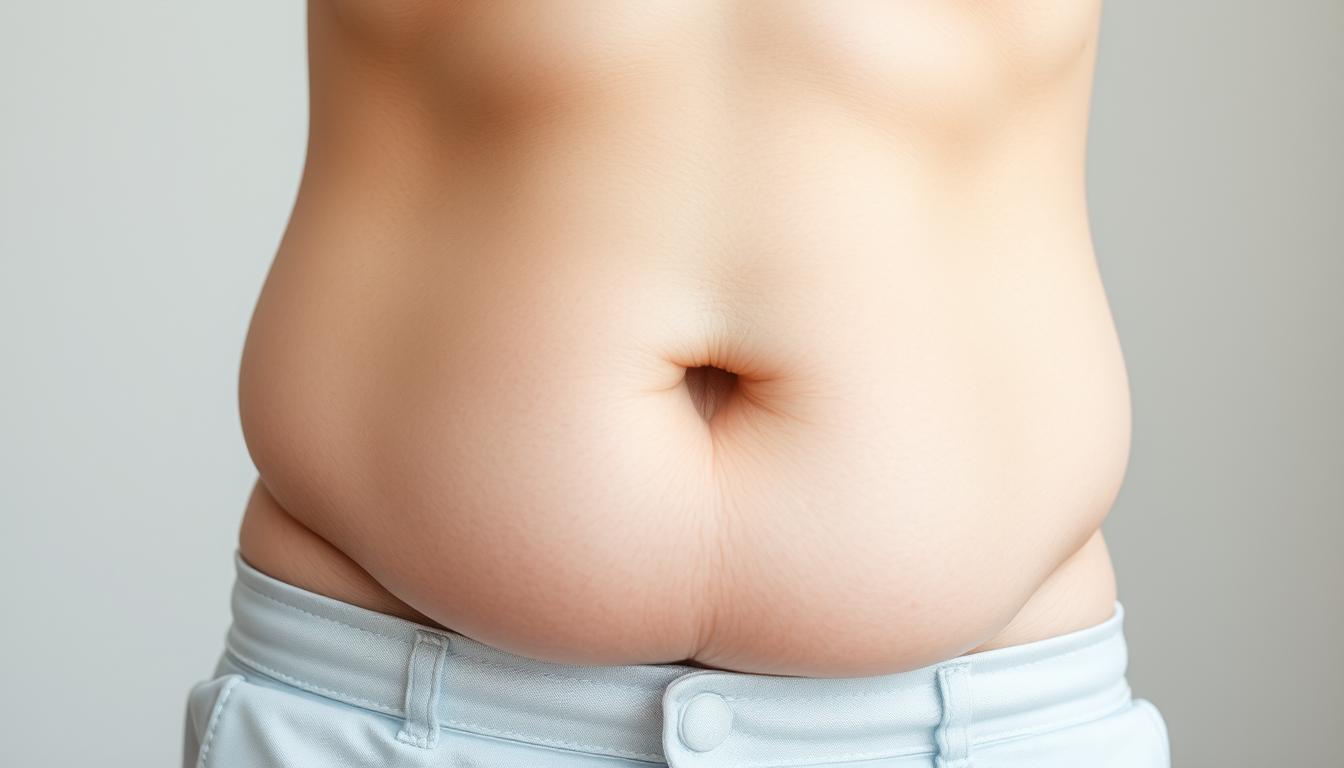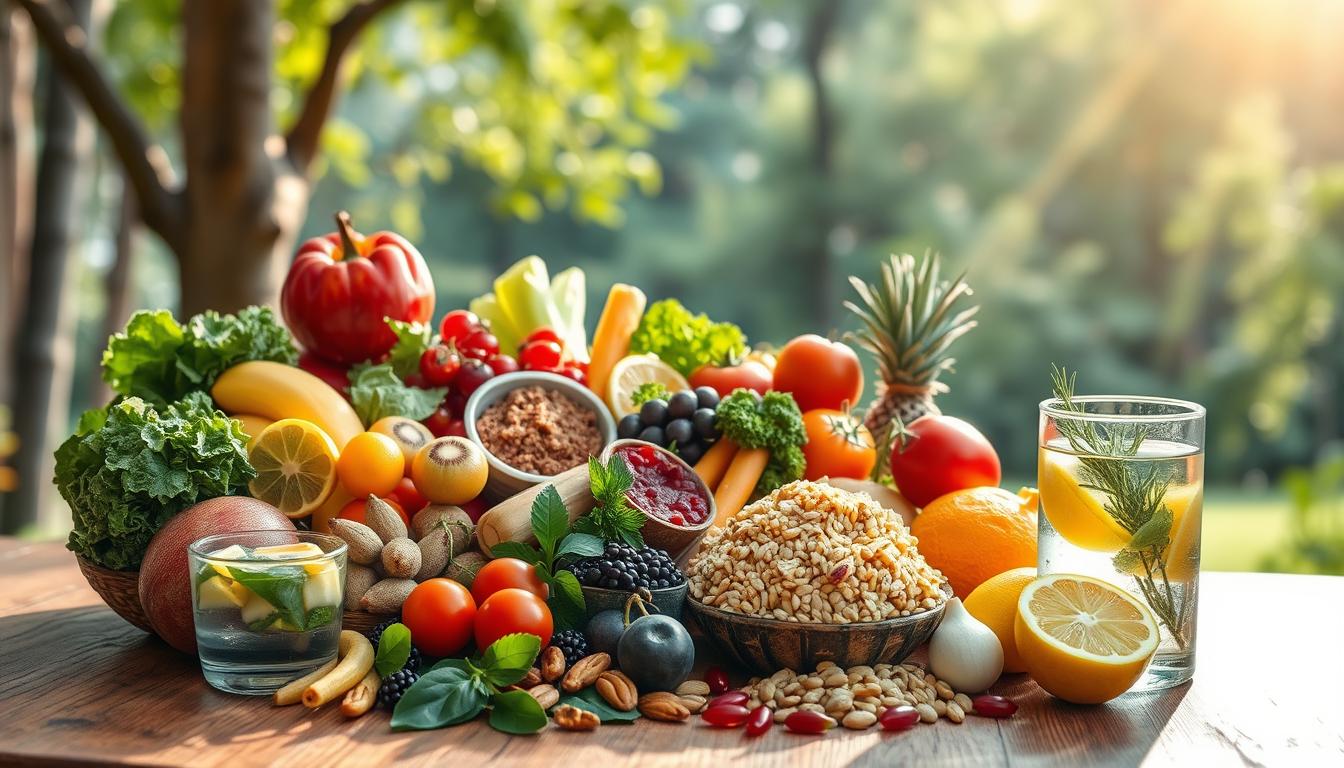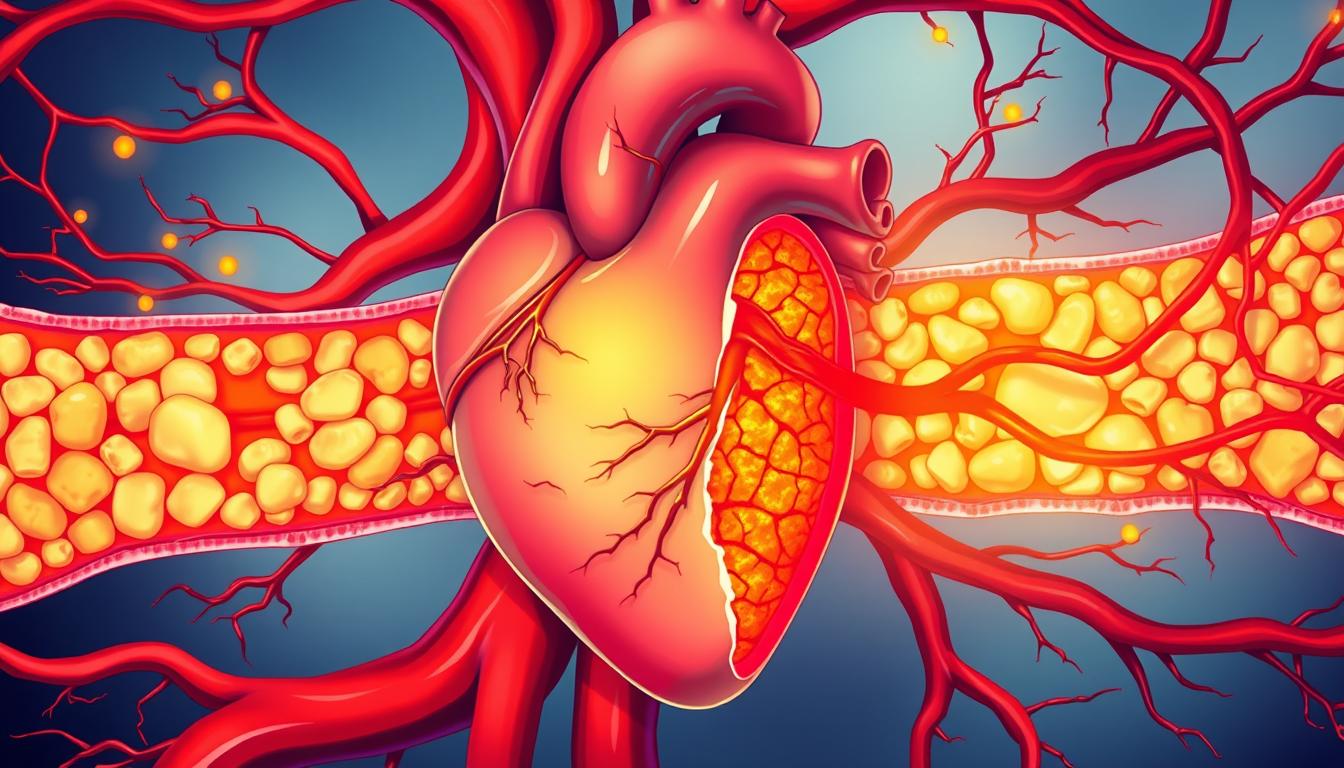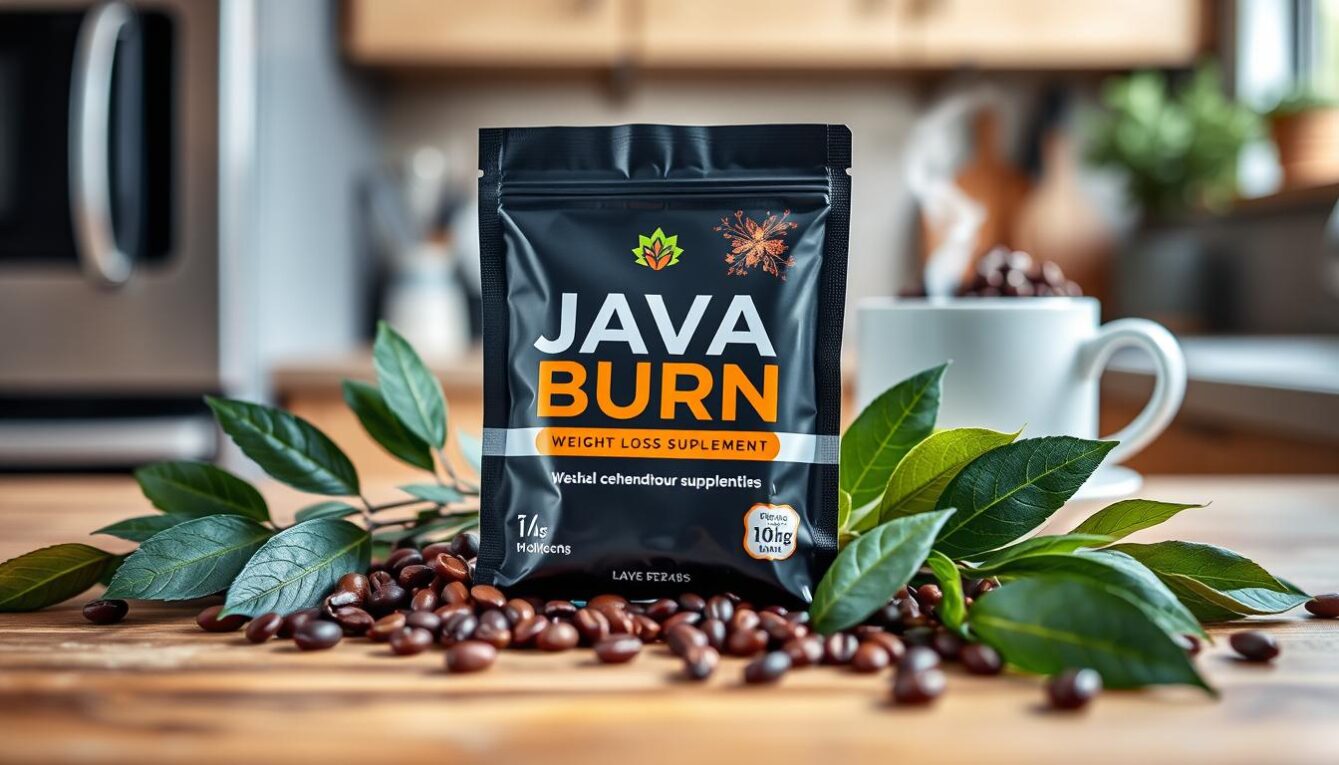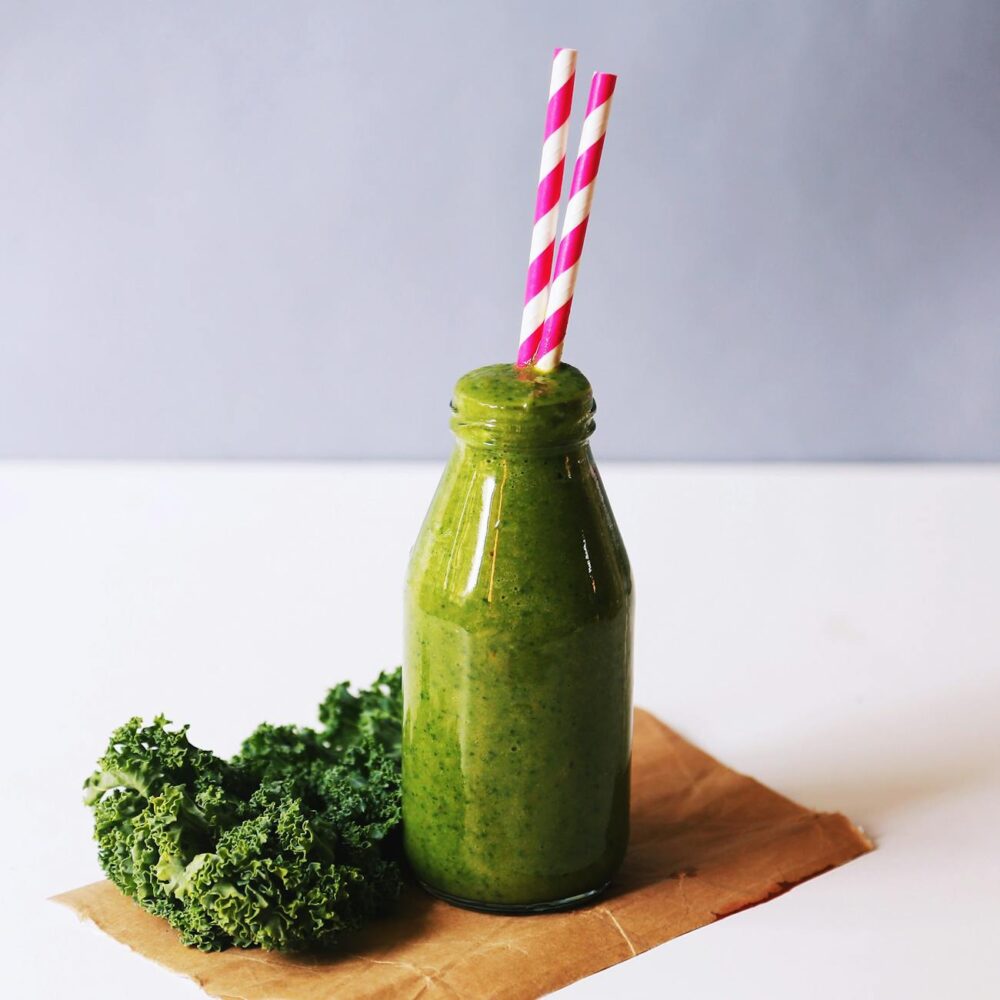Ever feel like no matter what you do, that stubborn belly fat just won’t budge? You’re not alone. Many people struggle with this frustrating issue, even when they’re putting in the effort. The truth is, belly fat isn’t just about appearance—it’s linked to serious health risks like diabetes and heart disease.
Spot reduction is a myth. Crunches alone won’t solve the problem. A holistic approach is key. Combining a balanced diet, regular exercise, quality sleep, and stress management can make a big difference. Solutions like HIIT workouts, Mediterranean diets, and better sleep hygiene can help you achieve your goals.
Understanding the root causes and taking actionable steps is the best way forward. Let’s explore how you can tackle this challenge effectively.
Key Takeaways
- Stubborn belly fat is linked to serious health risks like diabetes and heart disease.
- Spot reduction is a myth; a holistic approach is essential.
- Combine diet, exercise, sleep, and stress management for effective results.
- HIIT workouts and Mediterranean diets are proven solutions.
- Quality sleep hygiene plays a crucial role in weight loss.
Understanding Belly Fat and Its Health Risks
Visceral fat, a type of belly fat, poses serious health risks. Unlike subcutaneous fat, which lies just under the skin, visceral fat surrounds vital organs like the pancreas and intestines. This fat is metabolically active and can disrupt the body’s normal functions.
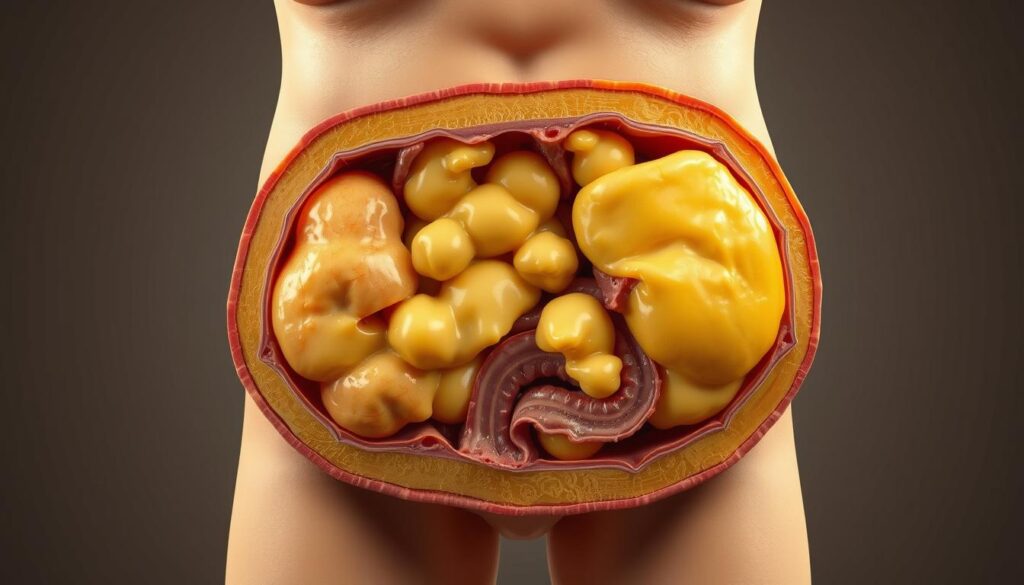
Visceral fat plays a biological role, but too much of it can lead to problems. It’s linked to insulin resistance, which increases the risk of type 2 diabetes. Studies also show a strong connection between visceral fat and coronary artery disease.
What is Belly Fat?
Belly fat comes in two forms: visceral and subcutaneous. Visceral fat is deeper and more dangerous. Subcutaneous fat is the layer you can pinch. Both types are influenced by factors like aging and genetics.
As we age, fat tends to accumulate around the midsection. Genetics also play a role in where fat is stored. Some people are more prone to storing fat in the belly area.
Health Risks Associated with Excess Belly Fat
Excess visceral fat is a major health concern. It’s associated with chronic inflammation, which can lead to various diseases. Research highlights its role in conditions like diabetes and heart disease.
- Visceral fat increases the risk of insulin resistance and type 2 diabetes.
- It’s linked to coronary artery disease and other heart-related issues.
- Sleep deprivation (less than 7 hours) raises obesity risk by 32%.
- Waistlines over 35 inches (women) or 40 inches (men) signal higher health risks.
Managing belly fat requires a comprehensive approach. Understanding its risks is the first step toward better health.
The Role of Diet in Reducing Belly Fat
What you eat plays a huge role in managing stubborn fat around the midsection. A balanced diet not only supports overall health but also targets fat storage in the belly area. By making smart food choices, you can reduce inflammation, control calories, and promote sustainable weight loss.
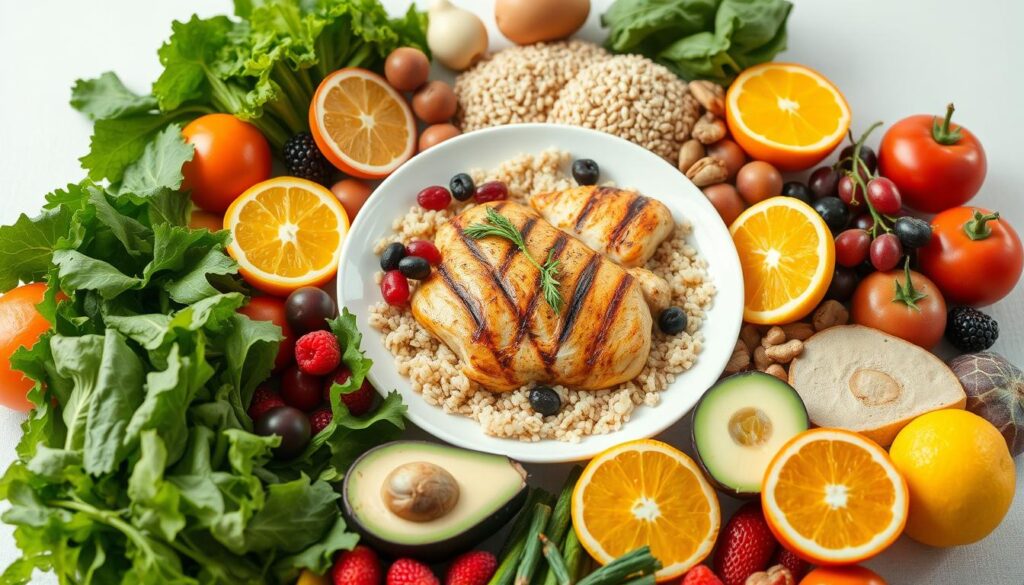
Foods to Include in Your Diet
Focus on nutrient-dense foods that keep you full and energized. Whole grains like quinoa and oats are rich in fiber, which aids digestion and reduces cravings. Leafy greens, such as spinach and kale, are packed with vitamins and minerals that support metabolism.
Omega-3-rich foods like salmon and walnuts are excellent for reducing inflammation. Plant-based diets high in polyphenols, found in berries and green tea, also have anti-inflammatory effects. These foods not only help with fat loss but also improve overall health.
Foods to Avoid
Certain foods can sabotage your efforts. Refined grains, like white bread and pastries, cause inflammation and lead to weight gain. Sugary drinks, including soda and energy drinks, are loaded with empty calories and spike blood sugar levels.
Processed snacks like chips and cookies are often high in unhealthy fats and additives. Instead, opt for healthier alternatives. Swap white bread for whole-grain options and replace soda with herbal tea. These small changes can make a big difference inreducing belly fat.
- Include whole grains, leafy greens, and omega-3-rich foods in your meals.
- Avoid refined grains, sugary drinks, and processed snacks.
- Practice portion control with healthy fats like avocado and nuts.
Exercise: The Key to Losing Belly Fat
Exercise is a powerful tool for tackling persistent belly fat. While diet plays a crucial role, physical activity helps burn calories and build muscle mass. A combination of cardio and strength training can yield the best results.

Cardio vs. Strength Training
Cardio workouts, like running or cycling, are great for burning calories. They help reduce overall body fat, including visceral fat. Aim for at least 150 minutes of moderate aerobic activity per week.
Strength training, on the other hand, builds muscle mass. More muscle means a higher metabolism, which helps you burn more calories even at rest. Incorporate exercises like squats, lunges, and deadlifts into your routine.
High-Intensity Interval Training (HIIT)
HIIT is a game-changer for fat loss. It combines short bursts of intense activity with rest periods. For example, try 30-second sprints followed by 1-minute walks. Studies show HIIT can reduce visceral fat by up to 20%.
For core strength, add planks and oblique exercises. Tools like Synergee Core Sliders and Bosu Balance Trainers can enhance your workout. Research even found that just 2 weeks of sprint training can reduce waist size.
- Cardio burns calories, while strength training builds muscle mass.
- HIIT combines intense bursts with rest for maximum fat loss.
- Use tools like Synergee Core Sliders for effective core workouts.
The Importance of Sleep in Weight Loss
Sleep is often overlooked in weight loss, yet it’s a game-changer for shedding stubborn fat. Poor sleep disrupts hormones like ghrelin and leptin, which control hunger and fullness. Studies show that getting less than 7 hours of sleep increases ghrelin by 30%, making you crave unhealthy foods.
Lack of sleep also affects insulin sensitivity, leading to fat storage, especially around the midsection. Chronic sleep deprivation is linked to a 32% higher risk of obesity. Prioritizing quality sleep is essential for both weight management and overall health.
How Sleep Affects Belly Fat
When you don’t get enough sleep, your body produces more cortisol, the stress hormone. High cortisol levels promote fat storage, particularly in the abdominal area. This can lead to increased visceral fat, which is linked to serious health issues like diabetes and heart disease.
Sleep also plays a role in regulating metabolism. A well-rested body burns calories more efficiently, while sleep deprivation slows down this process. Aim for 7-9 hours of sleep each night to support fat loss and improve overall well-being.
Tips for Better Sleep
Creating a sleep-friendly environment can make a big difference. Keep your bedroom cool, ideally around 65°F, to promote restful sleep. Avoid caffeine after lunch, as it can interfere with your ability to fall asleep.
Incorporate magnesium-rich foods like spinach and almonds into your diet. Magnesium helps relax muscles and improve sleep quality. For an extra boost, consider supplements like Pure Encapsulations Magnesium.
Stick to a consistent sleep schedule, even on weekends. Going to bed and waking up at the same time every day helps regulate your body’s internal clock. Small changes can lead to big improvements in your sleep and weight loss journey.
Stress Management and Its Impact on Belly Fat
Managing stress is a critical yet often overlooked factor in reducing belly fat. Chronic stress triggers the release of cortisol, a hormone that can lead to fat storage, particularly in the abdominal area. This not only affects your body but also increases the risk of health issues linked to visceral fat.
How Stress Contributes to Belly Fat
When stress levels rise, cortisol enlarges fat cells, especially around the midsection. This hormone also promotes cravings for sugary and fatty foods, leading to overeating. A study found that women with high stress gain three times more belly fat than those with lower stress levels.
Stress-eating often involves high-calorie snacks, which worsen abdominal obesity. Over time, this cycle can make it harder to lose weight. Managing stress is essential for breaking this pattern and supporting overall health.
Stress-Relieving Activities
Incorporating relaxation techniques into your routine can help lower cortisol levels. Activities like yoga and meditation are proven to reduce stress and improve mental clarity. Music therapy is another effective way to unwind and calm the mind.
Social connections also act as a buffer against stress. Spending time with loved ones can provide emotional support and reduce feelings of anxiety. Additionally, limiting caffeine intake can prevent cortisol spikes and promote relaxation.
- Practice yoga or meditation to reduce stress levels.
- Engage in music therapy for relaxation.
- Build strong social connections to combat stress.
- Limit caffeine to avoid cortisol spikes.
The Role of Alcohol in Belly Fat Accumulation
Alcohol consumption is often linked to weight gain, especially around the midsection. While enjoying a drink can be part of social gatherings, it’s important to understand its impact on your body. Alcohol not only adds empty calories but also slows down metabolism, making it harder to lose belly fat.
Research shows that beer consumption is particularly associated with abdominal obesity. A study found that diabetics with high alcohol intake had more visceral fat, which is linked to serious health risks. For men, limiting intake to 1-2 drinks per day, and for women, no more than one drink is recommended.
How Alcohol Affects Belly Fat
When you consume alcohol, your body prioritizes metabolizing it over burning fat. This process slows down your metabolism and promotes fat storage, particularly in the abdominal area. Alcohol also increases appetite, leading to overeating and poor food choices.
Additionally, sugary cocktails and mixers add extra calories without providing any nutritional value. Over time, these habits can contribute to weight gain and make it harder to achieve your fitness goals.
Moderation Tips
To minimize the impact of alcohol on your waistline, consider these tips:
- Swap sugary cocktails for healthier options like vodka soda with lime.
- Set alcohol-free days to give your body a break and support fat loss.
- Stay hydrated by drinking water between alcoholic beverages.
- Avoid diet soda mixers, as artificial sweeteners can still trigger cravings.
By practicing moderation and making smarter choices, you can enjoy a drink without compromising your health or fitness goals.
Building a Sustainable Weight Loss Plan
Creating a sustainable weight loss plan requires more than just willpower. It’s about setting realistic goals, tracking your progress, and making gradual changes that fit your lifestyle. A well-thought-out plan ensures long-term success and helps you stay motivated.
Setting Realistic Goals
Start by defining clear, achievable goals. Instead of aiming for rapid results, focus on losing 1-2 pounds per week. This approach is healthier and more sustainable. SMART goals—Specific, Measurable, Achievable, Relevant, and Time-bound—can guide your journey.
For example, instead of saying, “I want to lose weight,” set a goal like, “I will lose 5 pounds in the next month by exercising 4 times a week and cutting out sugary snacks.” This clarity keeps you on track and helps measure your progress.
Tracking Your Progress
Monitoring your progress is essential for staying motivated. Use apps like MyFitnessPal to track calories and macros. These tools provide insights into your eating habits and help you make informed decisions.
Waistline measurements are often more accurate than scale readings. Research shows that tracking your waistline can give a better picture of fat loss, especially around the midsection. Take weekly progress photos to visually document your journey.
- Set SMART goals for achievable results.
- Use apps like MyFitnessPal for calorie tracking.
- Measure your waistline for accurate progress updates.
- Take weekly photos to visually track changes.
- Seek social support from workout buddies or online communities.
Gradual changes are key to building a sustainable plan. Replace processed snacks with nuts or fruits, and focus on low-carb diets that improve artery function. These small shifts can lead to significant results over time.
Conclusion
Focusing on long-term health is the best way to tackle stubborn belly fat. Combining strategies like HIIT workouts, a Mediterranean diet, and getting 7+ hours of sleep can make a significant difference. Remember, consistency matters more than perfection.
Small, sustainable changes are key to achieving your goals. Consulting a nutritionist can help create a personalized plan tailored to your body and lifestyle. This ensures you’re on the right track for effective weight loss.
Start today and take the first step toward a healthier, happier you. Your journey begins now!
